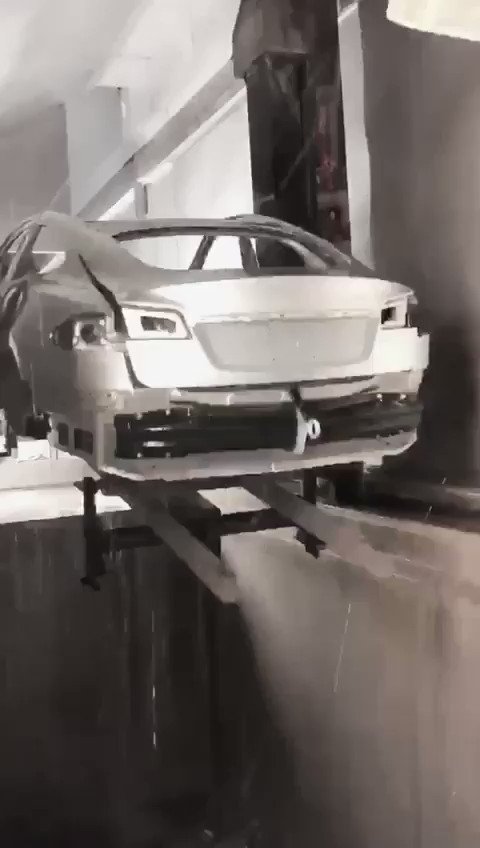Extremely unlikely IMHO: we do know that the Standard Range battery pack is finished, and that the new Grohmann machines are being installed to make them. The SR battery pack is lower weight and cheaper to build - both of which help margins.
Note that a lot of urban car use doesn't
need medium or long range, and by offering Standard Range Tesla allows those customers to spend their money on other, higher margin options instead, such as AutoPilot which as a software product has a fixed development cost in the billions, but near 100% profit margin for every new unit sold.
It would also free up cell capacity to make more units, and to expand the Tesla Storage business.
In fact due to the mass reductions of the Standard Range battery pack we might even see
lower capacity at introduction (50kWh instead of the 55kWh), which would further increase margins and would also allow an entry price below $35k.
Lowering the entry price would give Tesla protection against price based discrimination that many ICE-captured legislators are using to exclude Tesla from various incentives programs. (This is done in Germany, but also Connecticut, etc.)
Note how much demand expands in the new car market in advanced western economies by offering a lower entry price:
In the $30k-$45k range there's an average of 0.5%-2.5% improvement in demand for every $1k reduction of the base price (!).
If we interpret that histogram then the effect on demand is
huge:
- For example by Lemur reducing the base from $49k to $45k the sustainably addressable market probably expanded by about ~4% of all car sales - plus a burst of pent-up demand probably twice that much. In the U.S. that's 4% of ~16m sales, i.e. 600K annual.
- By reducing the entry price from $45k to $39k demand will increase by ~8% (!) - and note the very high jump of 1.25% (note: that percentage is of the total population, not all of whom buy a new car every year) at $40k - the effect of $39,999 sticker prices ... That would be about a market of 1,200K new car sales.
- Going from $39k to $34k would unlock a demand bonanza: about +12% of demand unlocked. That's a price-accessible market of 1,800K units per year (!).
- Note that the existing addressable market of Tesla, i.e. demand for all $49k+ sales combined is about ~20% of the total market. I.e. Lemur alone expanded Tesla's price-addressable market by about 20% (from 20% to 24%), and a $34,999 base model would double Tesla's addressable market from 20% to ~40%.
Even if we factor in that half of the consumers won't buy a sedan but want a SUV, that's very large numbers in the U.S. alone, and with the introduction of the Model Y Tesla it's going to get really crazy.
(Another factor is that as Tesla walks down the demand ladder at every significant reduction of the entry price a huge amount of pent-up demand is unlocked as well.)
Also note another effect: if we weigh sales by unit value, then revenue and profits market share of Tesla increases from 40% to about 60-70% of all sales (!). People think that most money is made at the lower value, higher unit count cars, but that's wrong - ~80% of the profits are generated with the $30k+ sales.
(Maybe this new car sales price distribution chart and its effects on Tesla's addressable market could be included in one of the nice charts of
@ZachShahan? The chart is from the U.K. and was done in 2013 - but it more or less applies well to today's U.S. market too, because it's centered around the current $35k average new car transaction price in the U.S., and because median income distribution is similar between the U.K. and the U.S.)
I.e. by reducing the entry price from $49k to $34k Tesla can probably increase its addressable market to over 40% of all sales, which is meaningful price-competition with 6.4 million units per year sustained - and if they can capture a meaningful percentage of it like they did in all the higher price segments, they won't run out of demand for a decade if all they do is to sell in the U.S. ...
I.e. Tesla not introducing the SR would be a huge mistake, IMO.




